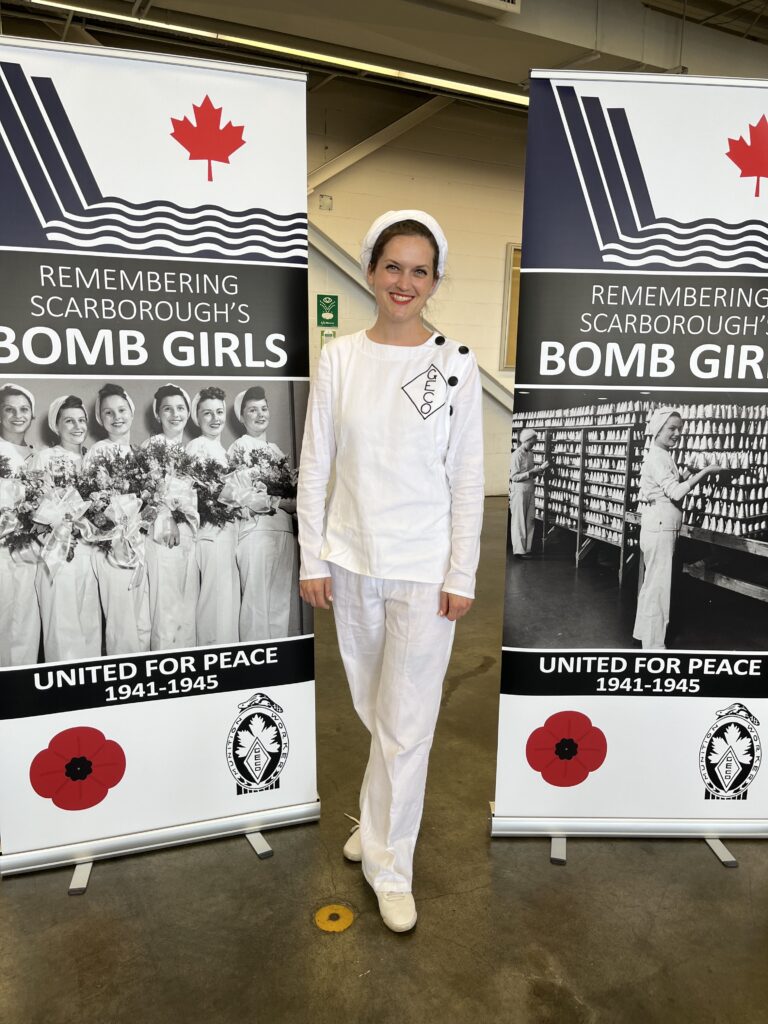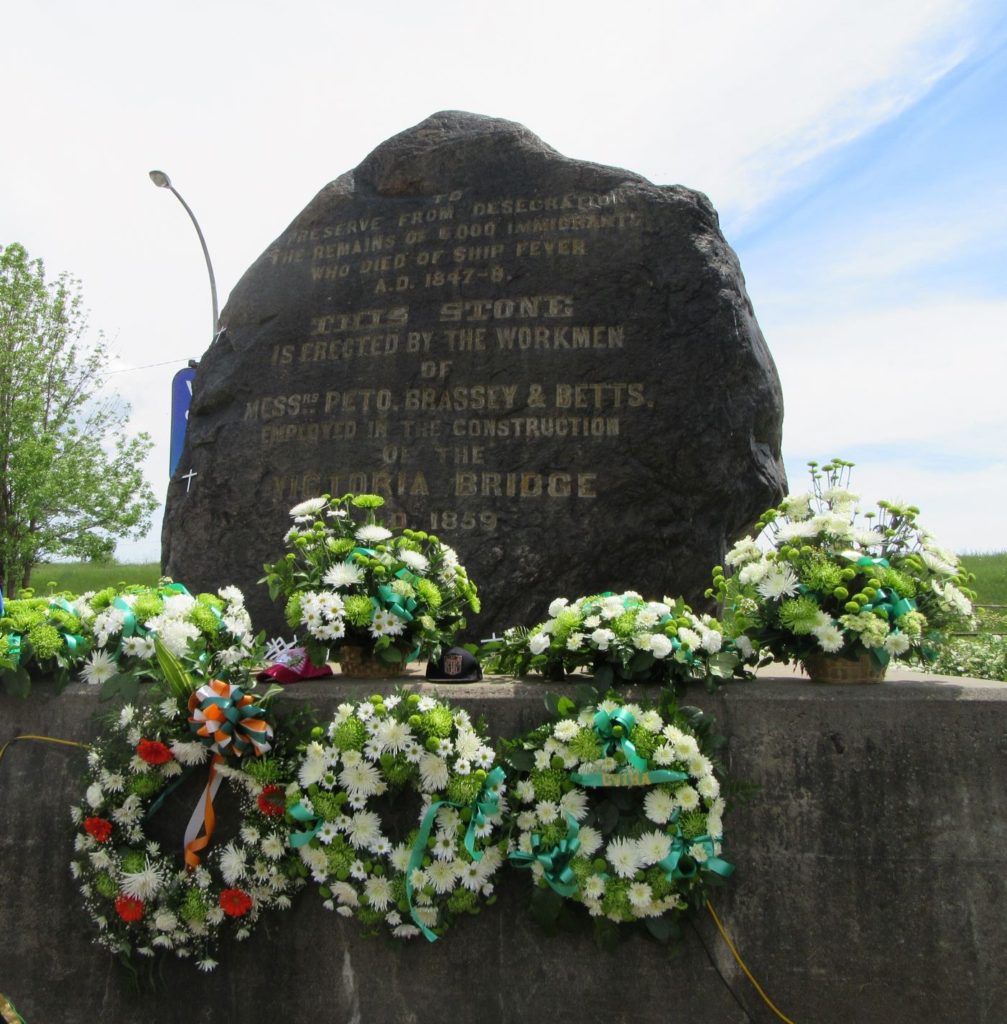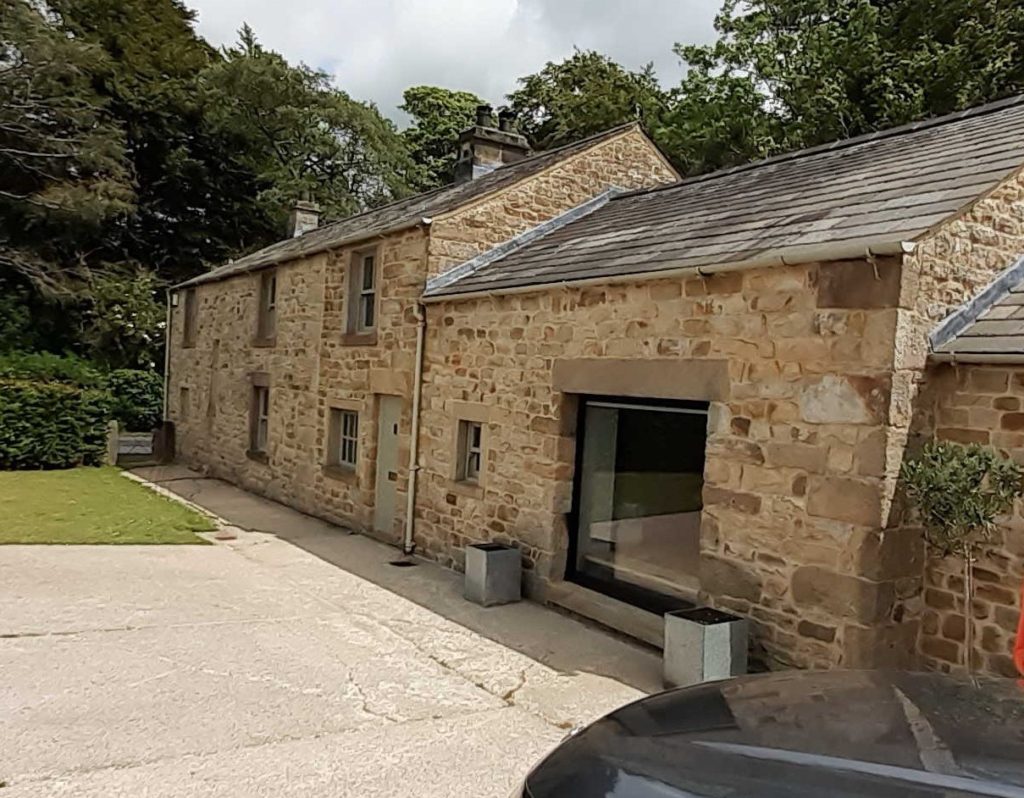
Barbara Dickson is an award-winning, best-selling, multi-published author, film documentarian, and sought-after professionally-trained speaker and local historian. She presents to myriad organizations such as retirement clubs and residences, charities, Canadian Royal Legions, and schools. Dickson’s speaking platform mirrors her passions: Bomb Girls, Irish memorials, MS, and heart transplantation. Individually, she focuses on the invaluable contribution made by Canadian women — Bomb Girls — engaged in war work especially in munitions factories such as GECO and DIL during the Second World War. She also brings awareness to important but little-known stories of nineteenth-century Canada including the impact and legacy of Irish immigration. She, along with her husband have discovered over two hundred Irish memorials in Canada. From a medical standpoint, life with multiple sclerosis — MS — is another important topic in Dickson’s speaking portfolio. Lastly, Dickson — as a parent of the child who has undergone a heart transplant — speaks about organ transplantation in Canada especially through her perspective as a mother.
As a well-established journalist, Barbara Dickson’s magazine articles have appeared around the world as far away as South Africa, Germany, and California. Her debut novel, Mountains for Maddi, was published in 2009 to enthusiastic reviews.
Dickson’s first non-fiction book, entitled, Bomb Girls: Trading Aprons for Ammo was released in September 2015. She has completed a follow-on book, entitled, Bomb Girls: United for Peace, which will feature 101 incredible Bomb Girls stories.
Today, Canada’s Bomb Girls story continues to gain ground.
- On June 6, 2024, the Bomb Girls Legacy Foundation unveiled a memorial banner program in Scarborough near the original GECO munitions factory location. Thirty-three iconic scenes are depicted on banners flying along Eglinton Avenue East from Warden to Pharmacy Avenues;
- In September 2023, the Bomb Girls Legacy Foundation was established to commemorate the courage, dedication, and grit of Canadian women (and men) in helping to win the Second World War;
- Bomb Girls, an episodic televised production aired for two seasons on Global TV;
- Toronto’s Mural Routes unveiled a mural honouring Scarborough’s Bomb Girls located in the subway breezeway on St. Clair Avenue East, east of Warden Avenue;
- Heritage Toronto nominated Bomb Girls: Trading Aprons for Ammo for their Heritage Toronto Book Award which celebrates outstanding contributions about Toronto’s history or heritage in book-length, non-fiction;
- Bomb Girls: Trading Aprons for Ammo was a finalist in the esteemed Legislative of Ontario Speaker’ Book Awards. The Speaker’s Book Award recognizes non-fiction works by Ontario authors reflecting the diverse culture and rich history of the province and of its residents;
- Bomb Girls: A Documentary, directed by Mike Palmer and released by Bell Media, features the incredible personal stories of five surviving bomb girls. The documentary was short-listed in the prestigious Imperial War Museum’s Short Film Festival where it was nominated for the Annie Dodds Award for Best Documentary and Best Use of IWM Archive Material;
- Two new streets in south Scarborough — “Fusilier Drive” and “Cleanside Road” — commemorate the invaluable work carried out by Bomb Girls who worked at the GECO munitions factory. The streets can be found north of St. Clair Avenue East, east of Warden Avenue;
- The new Eglinton Crosstown LRT will feature pictures of Scarborough’s Bomb Girls at the Golden Mile stop.
Click on the images below to find inspiring stories of everyday heroes: from people who helped write Canada’s amazing story to more contemporary souls who inspire others as they soar above personal challenges.
Canada’s Bomb Girls

General Engineering Company (Canada) Ltd. during the Second World War operated as a top-secret munitions plant that filled over 256 million fuses for the Allied Forces. GECO employed over twenty-one thousand patriotic Canadians — predominantly women — who doffed their aprons and domestic responsibilities to don factory uniforms, and risked their lives daily handling gunpowder and high explosives. Canada’s bomb girls at GECO is truly an amazing Canadian story that’s never been told — until now.
Irish Memorials in Canada

The shores of the St. Lawrence River and Lake Ontario are reverently dotted by a string of Irish Memorials paying tribute to hundreds of thousands of desperate, starving men, women, and children who fled the Great Hunger and economic hardship in Ireland. Tragically tens of thousands died from pestilence before they had a chance to live in their newly adopted country. Many died in shipwrecks en route. Thousands died helping to build Canada in work accidents and from lake fever. There are over two hundred memorials to the Irish in Canada.
1833: An Canadian Immigration Story

David Cragg, a Quaker born in 1769, began keeping a diary on his eighteenth birthday and wrote every day until just before he died in 1835. He wrote about rural English life during the eighteenth and nineteenth century, from minutiae such as daily weather reports and his displeasure with the pettiness of his church, to sweeping world events including the impact of the Napoleonic Wars and the lasting consequences of the Industrial Revolution. He recounted the devastation caused in his family by a grand consumption, scarlet fever, and the dreaded lake fever. Widowed and penniless, David sailed from his beloved England with his children and landed in Toronto — then Muddy York — in 1833. Tragically, he died eighteen months later after founding the town of Greenbank, Ontario.
MS Doesn’t Have to Be a Mess ©

“You have multiple sclerosis.” With a simple declaration, Barbara Dickson joined a very special club with a courageous membership numbering in the hundreds of thousands. Canada has one of the highest rates of MS in the world.
What is multiple sclerosis?
According to the MS Canada, “multiple sclerosis (MS) is an unpredictable, often disabling disease of the central nervous system — the brain and spinal cord. The disease attacks the protective myelin covering of the central nervous system, causing inflammation and often destroying the myelin in patches. In its most common form, MS has well defined attacks followed by complete or partial recovery. The severity of MS, progression and specific symptoms cannot be predicted at the time of diagnosis.”
MS: Hope despite a diagnosis
Although no one would choose a diagnosis of such a potentially debilitating, progressive chronic illness, living with MS doesn’t have to be a mess.* Several disease modifying therapies are available to help slow the disease’s progression. Phenomenal global research strives to find more effective treatments, ultimately to discover a prevention and a cure. A healthy lifestyle including good nutrition and moderate exercise, along with a positive attitude and enjoying the company of family and friends can all have a tremendous impact on a patient’s quality of life. Living an enriched and beautiful life can be a reality, even while living with MS.
May you find your heart a little brighter and your step a little lighter from having tarried within these pages.
* Thanks to Terry and Alex for their gracious permission to use their slogan, “MS Doesn’t Have to Be a Mess.”
